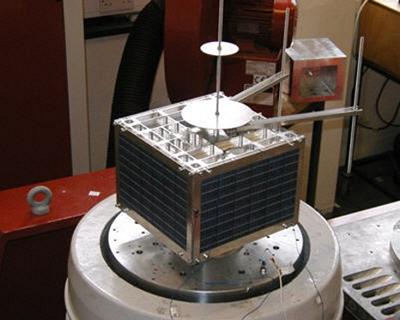MSc projects give students experience in key aspects of spacecraft systems engineering, a selection of potential projects are described below.

Deployable spacecraft structures
Design analysis and testing of a deployable boom for microsatellite applications
Multifunctional spacecraft structures
Multifunctional spacecraft structures are a class of structures which integrate a wide range of functions or equipment (electronics, batteries, thermal management etc.) into the load bearing structure of a spacecraft. This project consists of designing a multifunctional structural element for a spacecraft
Multifunctional structures for planetary rovers
This project involves a feasibility study and preliminary design of the Carbon Fibre Reinforced Plastic structure for a Mars rover which besides carrying the structural loads should be able to integrate the power storage system.
Self-healing spacecraft structures
The aim is propose new mechanisms which can achieve an automatic detection and repair process applicable to pressurized modules for human habitation in space.
Validation of spacecraft finite element models
The objective of this project is to investigate various methods to correlate the results of mathematical models (FEM) of satellites with real test results. Modes and test data are supplied by industry.
Cubesat
Southampton is developing its own cubesat with a view to obtaining a free launch on the VEGA launch vehicle. Work over a number of years has designed the structure, the power, attitude control and the onboard processing and work is continuing on the development and integration of these subsystems into a full operational system.
Sea salinity mission
A collaborative project with the National Oceanography Centre to investigate the feasibility of designing a constellation of spacecraft that can measure salinity in the coastal oceans. Students used the spacecraft concurrent engineering design facility at Southampton.

ESMO
Southampton students are responsible for the system engineering of the European Student Moon Orbiter. This exciting project is the first lunar spacecraft to be designed built and operated by students across Europe.
Spacecraft formation flying test bed
This project produced a design and manufactured the majority of the hardware needed for a 5 degrees of freedom (2 translational and 3 rotational) test bed to simulate the control of 2 mock spacecraft flying in tight formation.
Space debris removal mission
A project to investigate the feasibility and design of a mission to remove space debris from low Earth orbit (LEO). This work feeds into the space debris activities of the UK Space Agency in its role within the Inter-Agency Space Debris Coordination Committee (IADC).
Near Earth Object (NEO) deflection mission
Students are looking at how an asteroid can be deflected using a kinetic impact or a gravity tractor.